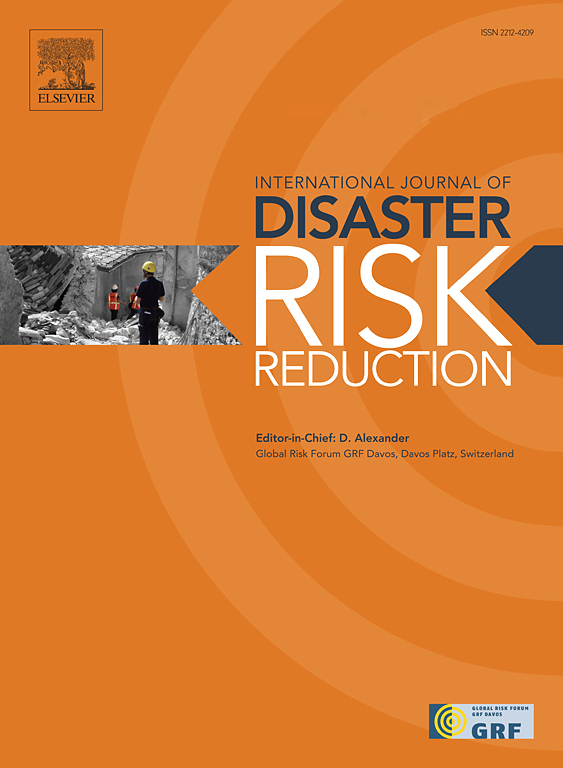Societal risk-to-life from natural hazards: Assessments, acceptability and actions at Whakaari/White Island and Piopiotahi/Milford Sound, Aotearoa/New Zealand
IF 4.2
1区 地球科学
Q1 GEOSCIENCES, MULTIDISCIPLINARY
International journal of disaster risk reduction
Pub Date : 2025-02-20
DOI:10.1016/j.ijdrr.2025.105325
引用次数: 0
Abstract
Conventional tourism risk-to-life analyses require data that are often unavailable, inaccurate or out-of-date. Thus tourist fatalities can occur where risk analyses have not been completed, as at Whakaari/White Island volcano, New Zealand in 2019, when 22 people on commercial tours died because of a sudden eruption. Even where risk analyses have been carried out (as at Piopiotahi/Milford Sound, New Zealand, a World Heritage Site where thousands of lives are endangered by coseismic landslide-triggered tsunami) unacceptable risks remain because (i) analyses can be misinterpreted, (ii) risk calculations change with time, and (iii) sociopolitical factors influence risk management decision-making.
Herein we (i) develop a methodology for reconnaissance ("average") risk-to-life assessment, to indicate where more complete assessments are required, and (ii) test this against (a) the empirical acceptability of risks following a disaster and (b) a series of risk analyses where no disaster has yet occurred.
We develop an “average” risk-to-life assessment for Whakaari/White Island, and compare its outcomes with existing risk analyses for Piopiotahi/Milford Sound. It agrees with post-event risk acceptability at Whakaari/White Island, and with pre-event risk analyses at Piopiotahi/Milford Sound.
We update the “average” risk analysis for Piopiotahi/Milford Sound by incorporating vulnerabilities of cruise ships and improved hazard data - the societal risk-to-life is unacceptable by several orders of magnitude. The only feasible strategy for achieving acceptable risk is drastically reducing visitor numbers. Socio-economic considerations suggest that this may not be societally practicable, which calls into question the way in which risk is used in planning to reduce tourism fatalities.
求助全文
约1分钟内获得全文
求助全文
来源期刊

International journal of disaster risk reduction
GEOSCIENCES, MULTIDISCIPLINARYMETEOROLOGY-METEOROLOGY & ATMOSPHERIC SCIENCES
CiteScore
8.70
自引率
18.00%
发文量
688
审稿时长
79 days
期刊介绍:
The International Journal of Disaster Risk Reduction (IJDRR) is the journal for researchers, policymakers and practitioners across diverse disciplines: earth sciences and their implications; environmental sciences; engineering; urban studies; geography; and the social sciences. IJDRR publishes fundamental and applied research, critical reviews, policy papers and case studies with a particular focus on multi-disciplinary research that aims to reduce the impact of natural, technological, social and intentional disasters. IJDRR stimulates exchange of ideas and knowledge transfer on disaster research, mitigation, adaptation, prevention and risk reduction at all geographical scales: local, national and international.
Key topics:-
-multifaceted disaster and cascading disasters
-the development of disaster risk reduction strategies and techniques
-discussion and development of effective warning and educational systems for risk management at all levels
-disasters associated with climate change
-vulnerability analysis and vulnerability trends
-emerging risks
-resilience against disasters.
The journal particularly encourages papers that approach risk from a multi-disciplinary perspective.
 求助内容:
求助内容: 应助结果提醒方式:
应助结果提醒方式:


